Western Trillium, Western White Trillium, Pacific Trillium, Oettinger's Trillium - Trillium ovatum
|
Trillium ovatum - Western Trillium, Western White Trillium, Pacific Trillium, Oettinger's Trillium. Trilliums are much more common in the east than they are in the west. In Idaho, where these photos were taken, there are only two Trillium species - the one presented here, Trillium ovatum, and the Idaho Trillium, Trillium petiolatum. There are two varieties of Trillium ovatum (some authorities considered these to be subspecies); var. ovatum (Pacific Trillium) and var oettingeri (Oettinger's Trillium.) Var oettingeri blooms later, from spring into summer, and is known only in a small area in northern California. Var ovatum may start blooming in late winter and on into spring. The bracts (what we normally consider the leaves) of var. oettingeri are on short petioles; those of var. ovatum are sessile.
Flora of North America states that T. ovatum var ovatum blooms from late February through late April, but these photographs were taken at relatively high elevations (5,000') in late May, and I have photographed another plant in the Wallowa National Forest as it was ending its bloom in early June.
Found in:
CA, CO, ID, MT, OR, WA, WY
Leave comments on Trillium ovatum at this link. | 
Distribution of Trillium ovatum in the United States and Canada:
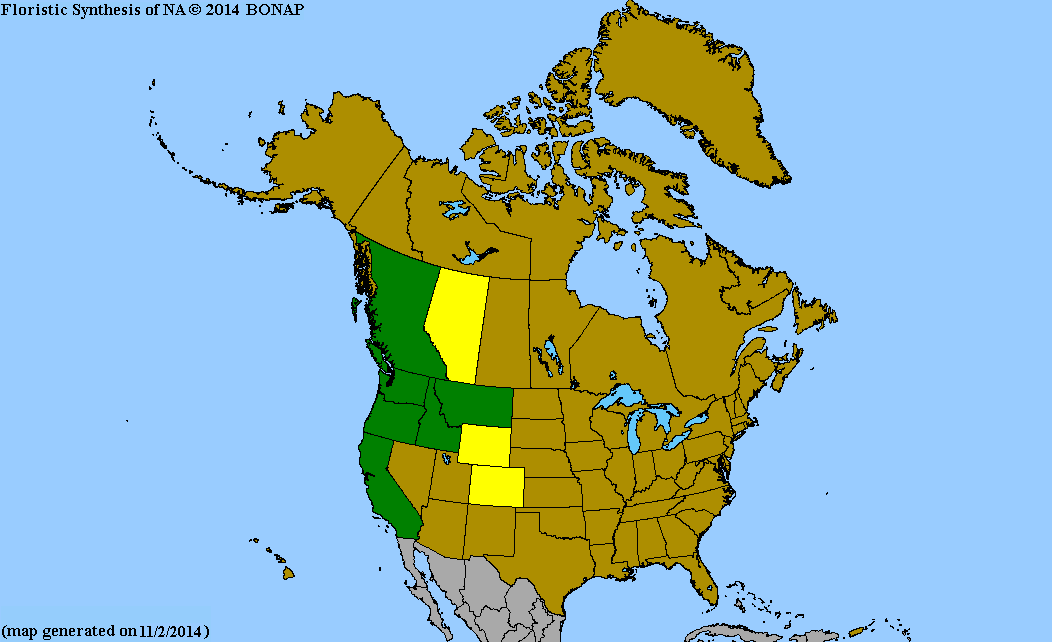
Map courtesy of The Biota of North America Program.
Map color key
Search Our Database: Enter any portion of the Scientific, Common Name, or both.
Do a general Google search of the entire site:
#ad
 Follow USWildflowers on Twitter
#ad
| | Site: Ponderosa State Park, Valley County, ID Date: 2012-June-01 | Photographer: Gerald C. Williamson
Nikon D7000
| | Western Trillium may grow to nearly 2 feet tall. The solitary flower is atop a smooth scape which has three leaf-like bracts. The bracts (leaves) are normally a solid green, but they are sometimes mottled. (There are reports of a narrowly-distributed form in California which has maroon markings.) The blossom is on a pedicel and has three green sepals that are usually narrowly lanceolate, smaller than the petals, but the sepals are occasionally much wider and longer than the petals. | | 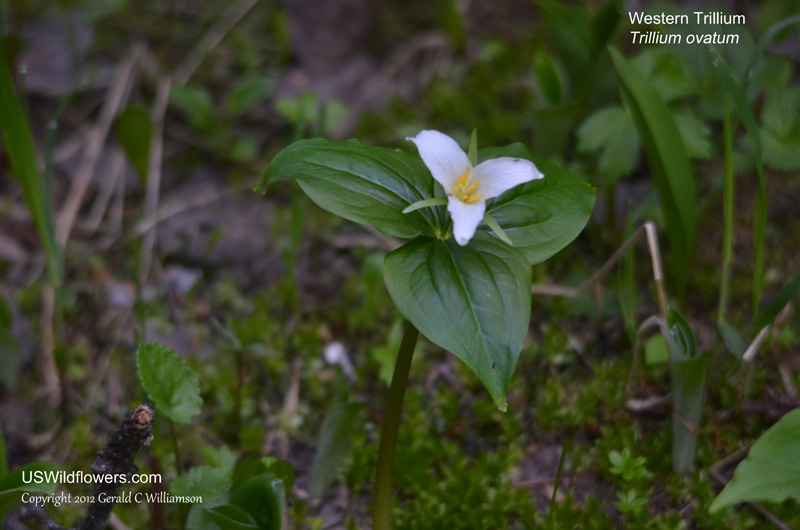
| | Site: Ponderosa State Park, Valley County, ID Date: 2012-June-01 | Photographer: Gerald C Williamson
Nikon D7000 | | The anthers are normally yellow as shown in the other photos on this page, but that is likely only when the pollen has developed. In this photo, the anthers are a very dull yellow. This led me to spend quite a bit of study on the other features of the plant before I concluded that it, too, was indeed T. ovatum. Had I remembered that T. ovatum and T. petiolatum were the only Trillium species in Idaho, I would have save myself some time on this research. | | Click on the photo for a larger image
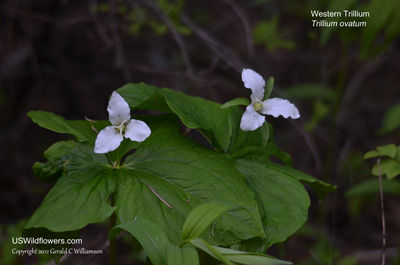
| | Site: June Lake, Washington Date: 2016-April-15 | Photographer: Matthew Haverly
Canon EOS REBEL T3i | Flora of North American reports that the ovoid, six-sided ovary of Trillium ovatum is normally white or green, although it looks yellowish in this photo, perhaps due to lighting or due to the yellow anthers/pollen. The anthers are yellow, and are longer than the white filaments which hold them. The whitish stigmas recurve, especially at their tip, and join at their base.
Photo used by permission of Matthew Haverly | | Click on the photo for a larger image
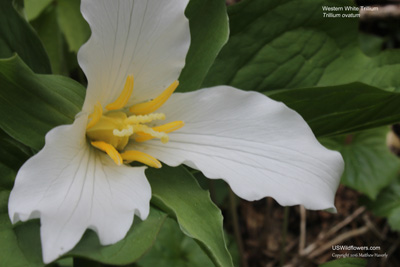
| | Site: Ponderosa State Park, Valley County, ID Date: 2012-June-01 | Photographer: Gerald C Williamson
Nikon D7000 | | The blossom is usually mostly erect, but many will nod, although rarely to drop below the bracts. Normally the petals are initially pure white but may have pink blush or markings even before the fade to pink/red begins. | | Click on the photo for a larger image
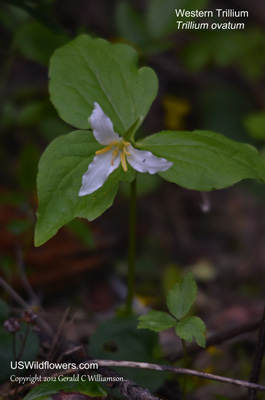
| | Site: Ponderosa State Park, Valley County, ID Date: 2012-May-31 | Photographer: Gerald C Williamson
Nikon D7000 | | A difference with the very similar eastern species Trillium grandiflorum is that the petals of T. grandiflorum are initially erect, forming a tube which obscures the ovary when viewed from above the blossom. In T. ovatum, the petals are more widely flaring initially, exposing the ovary when seen from above. Both have similar leaves and bracts; both have white petals which fade to pink with age. T. ovatum petals may change to a deeper red (sometimes dark red) than those of T. grandiflorum. | | Click on the photo for a larger image
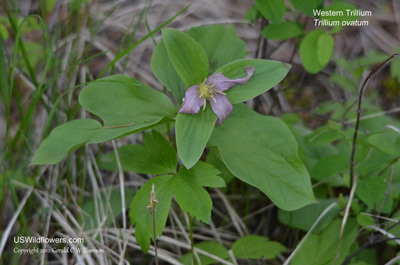
|
References used for identification and information:
|
|
| |
| #ad
|
|







